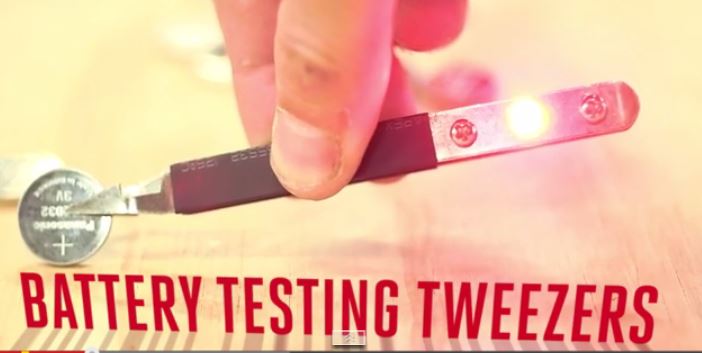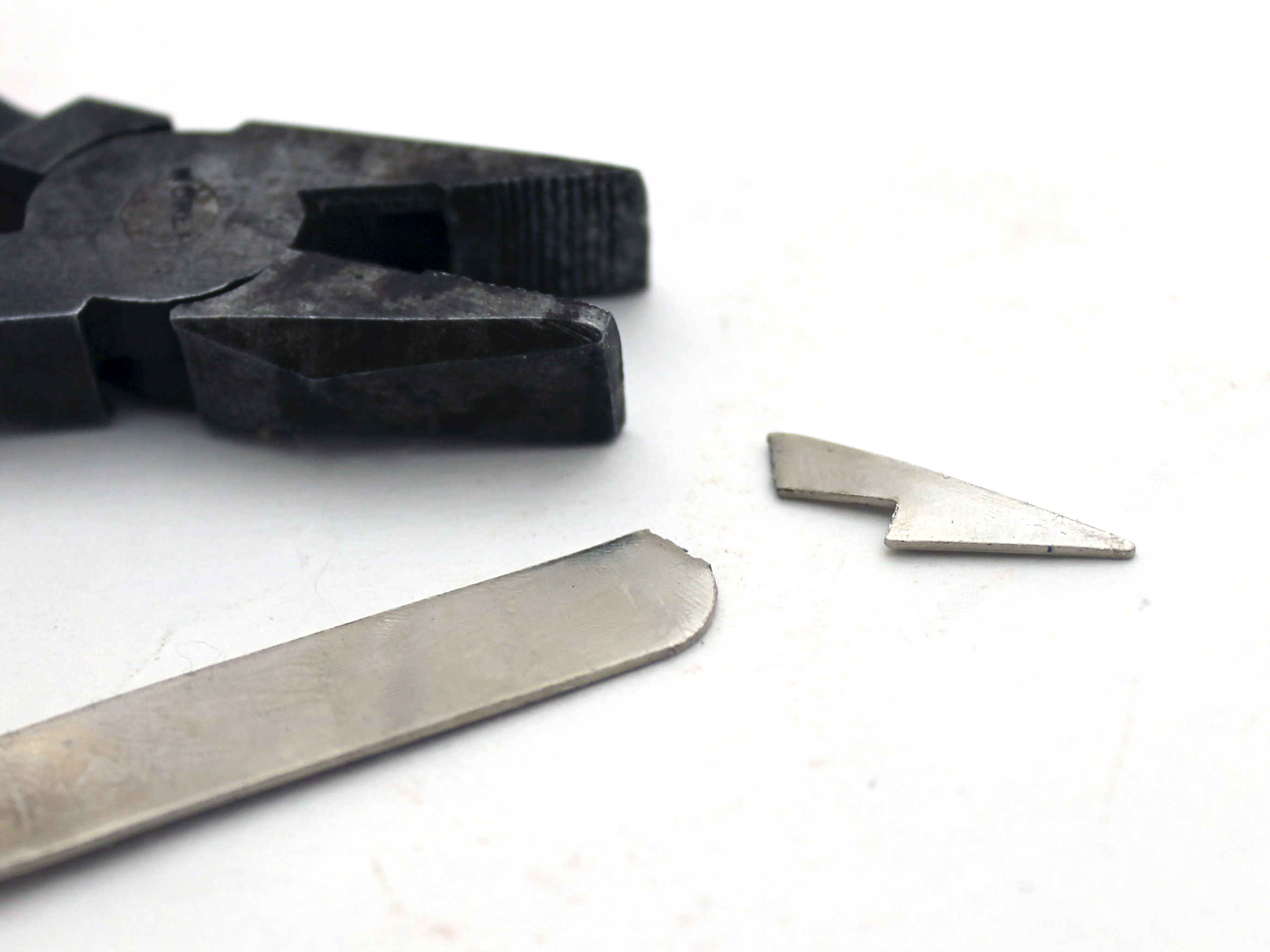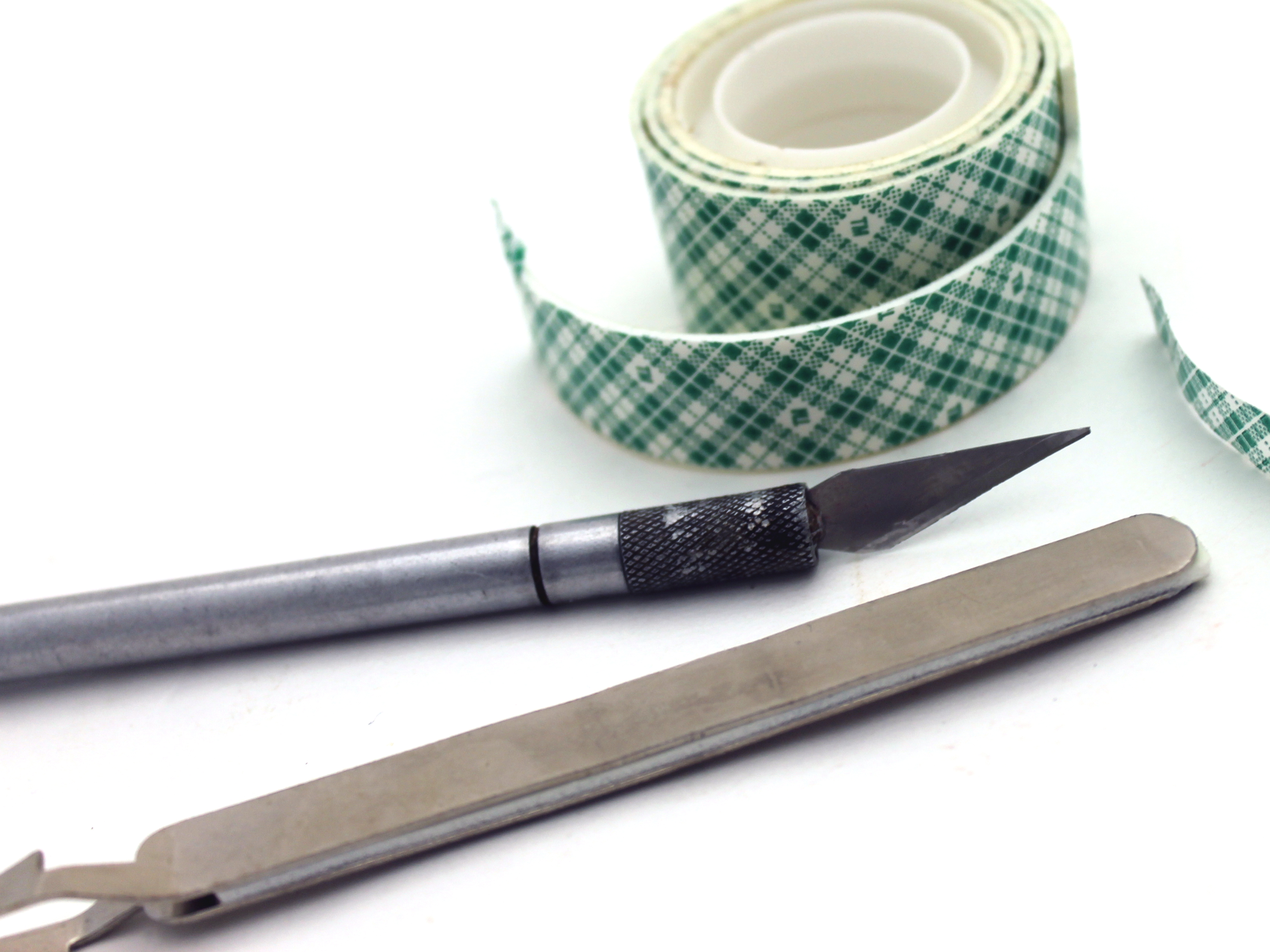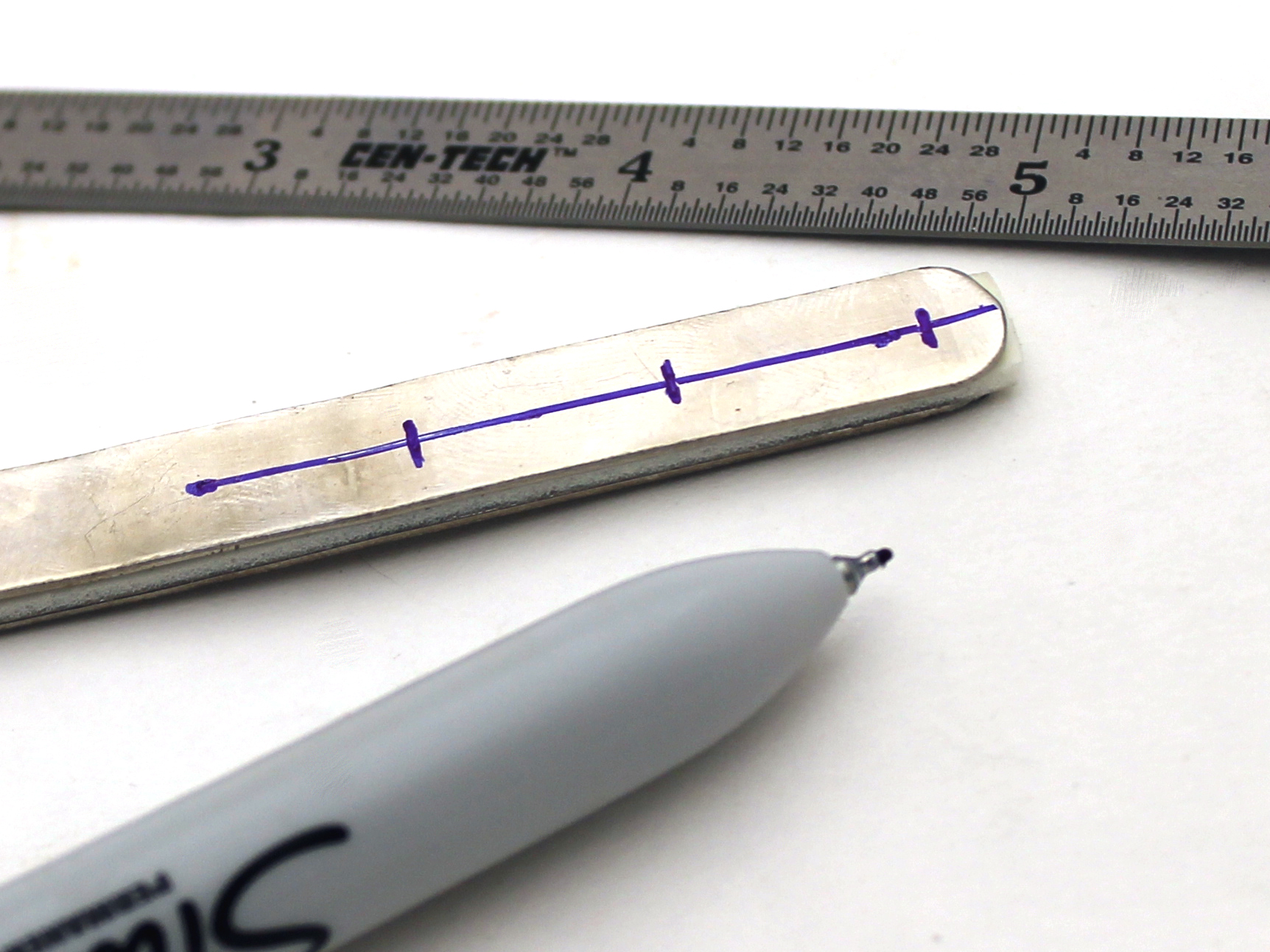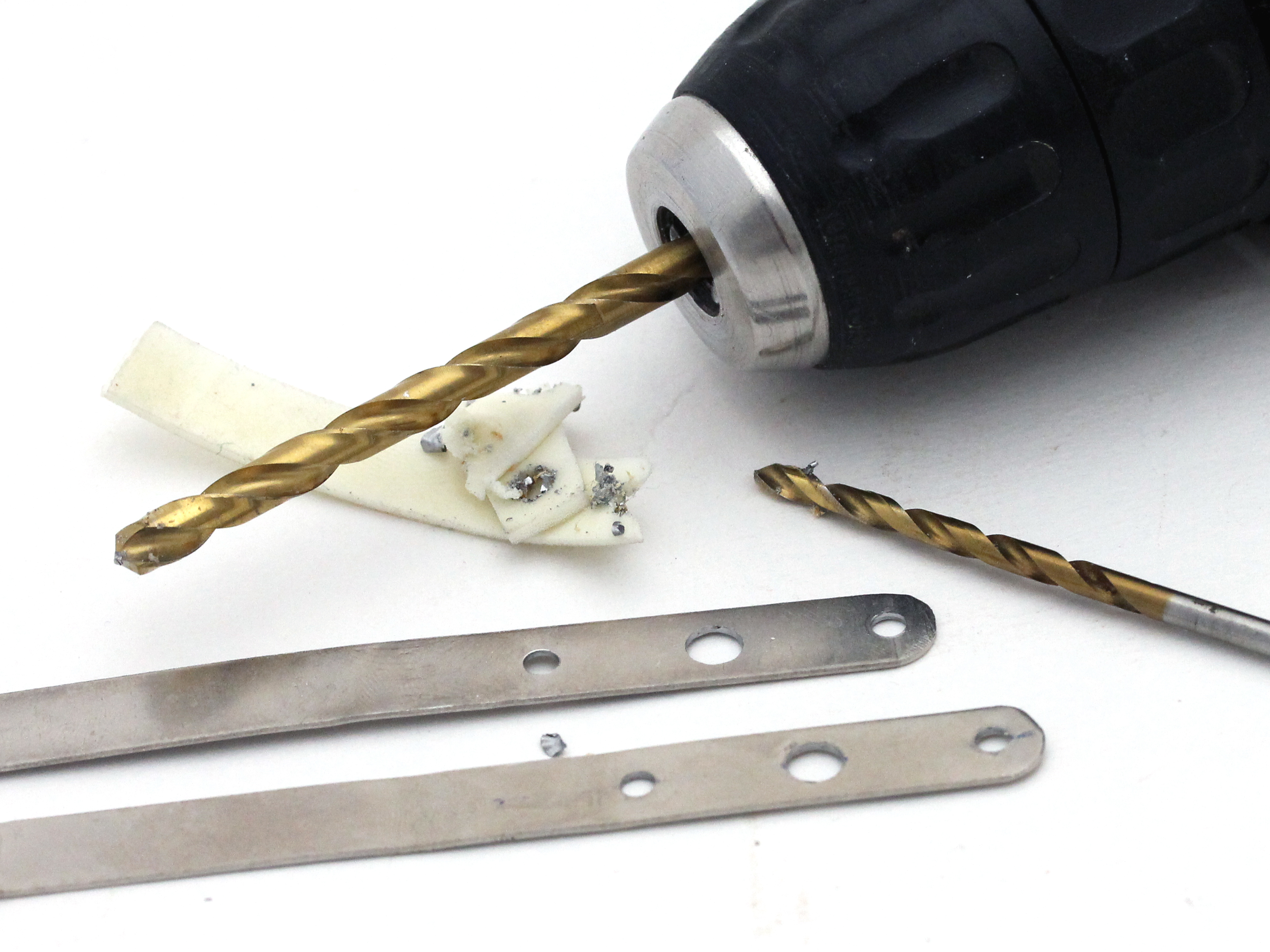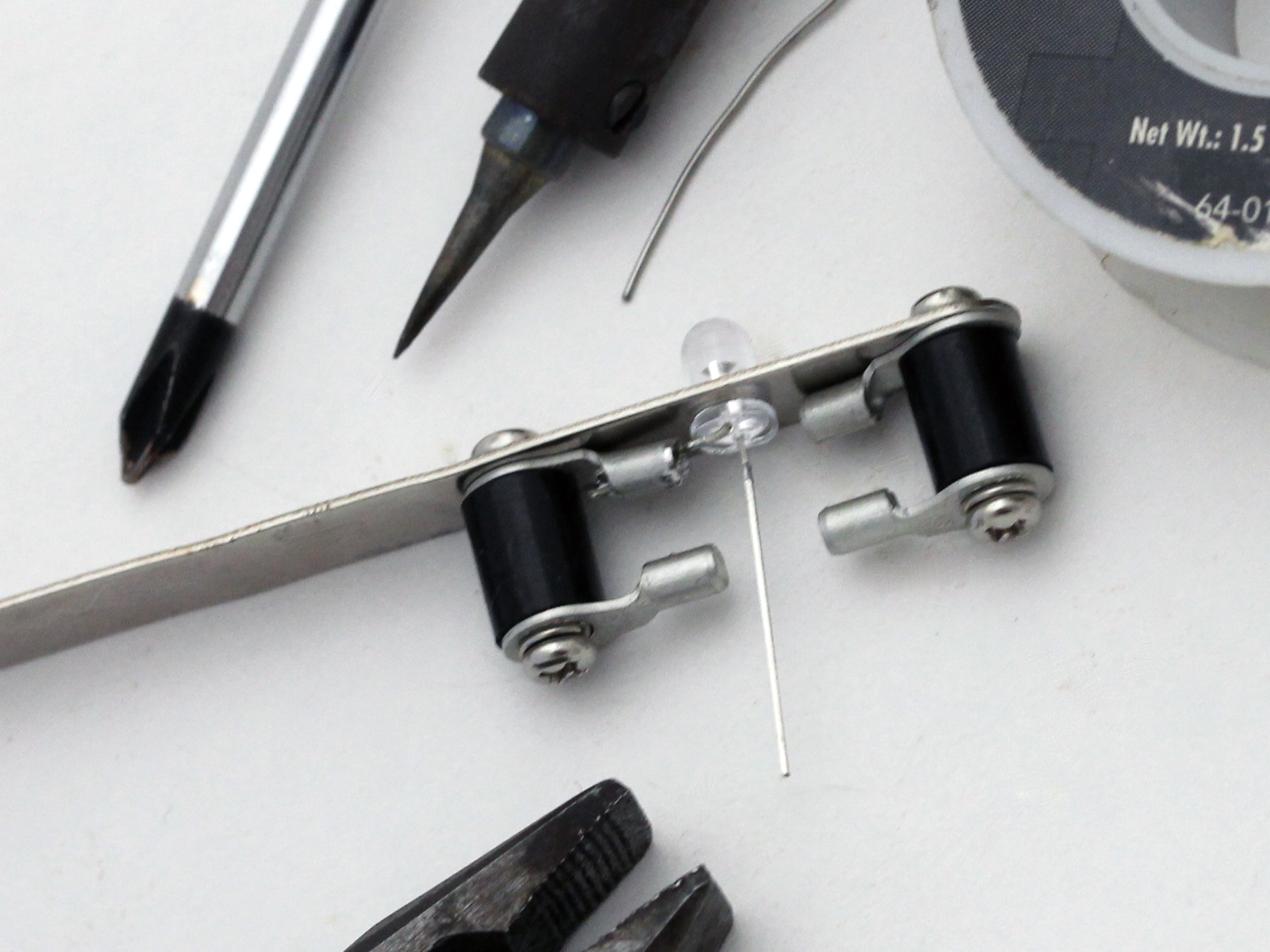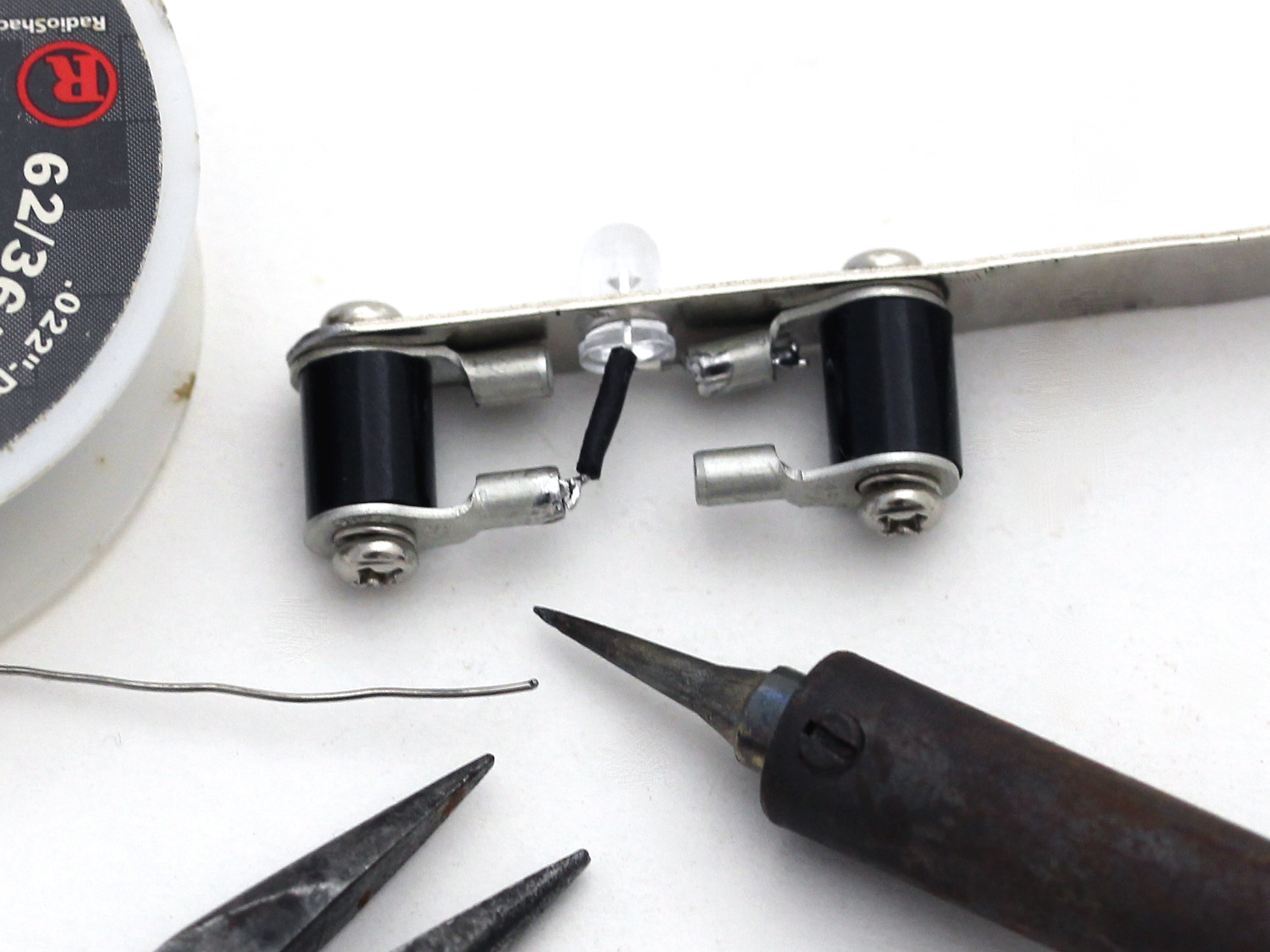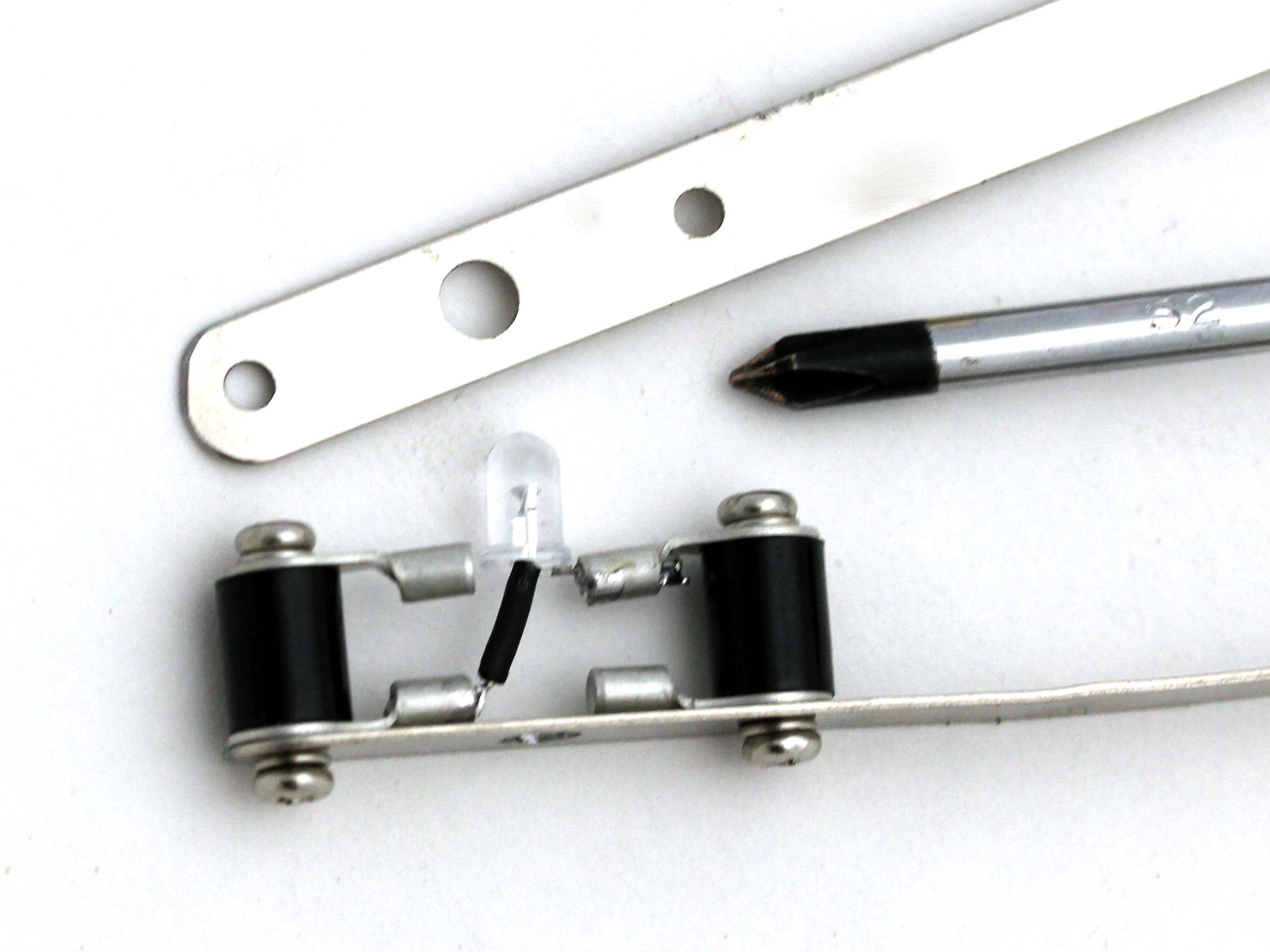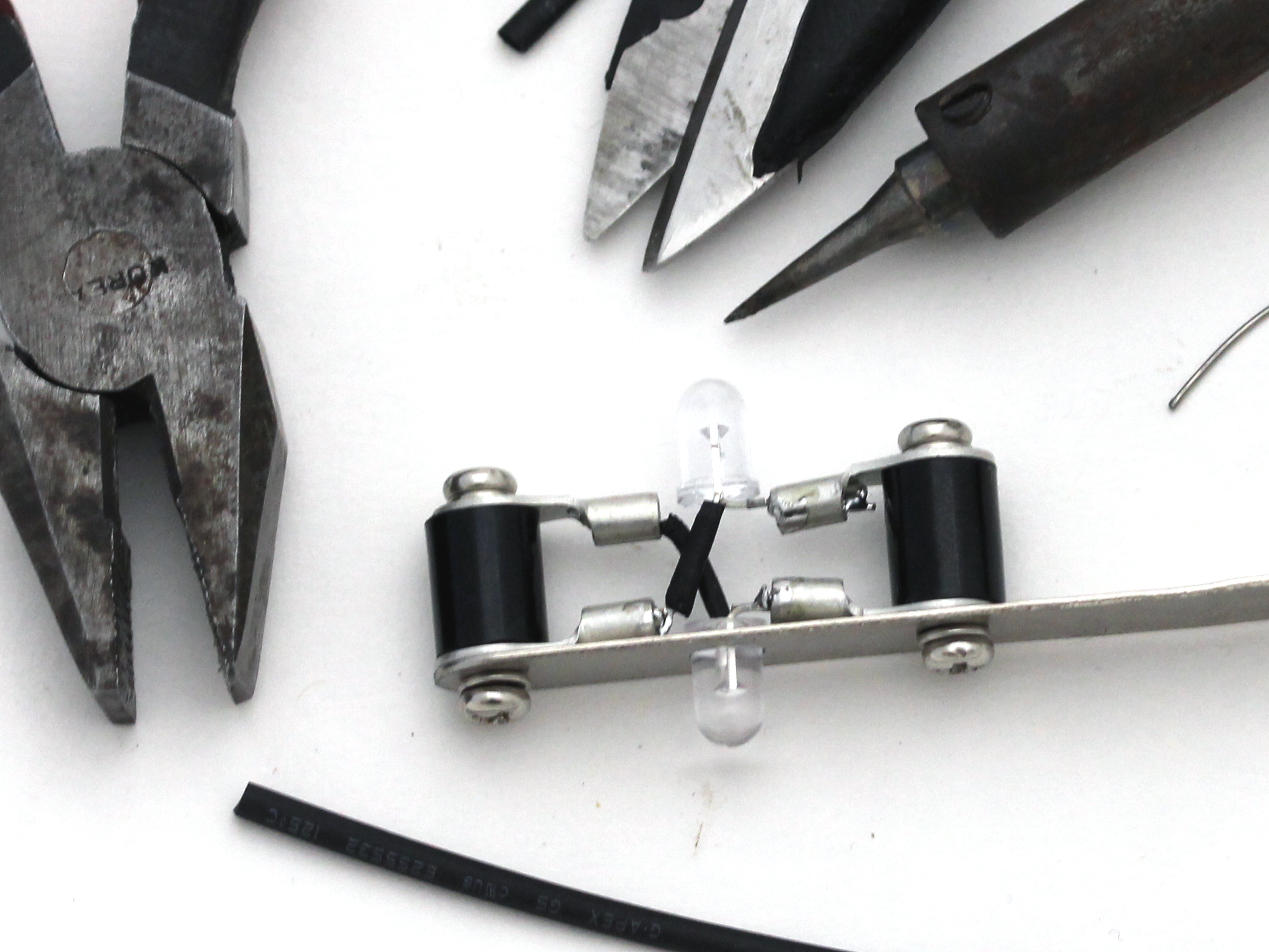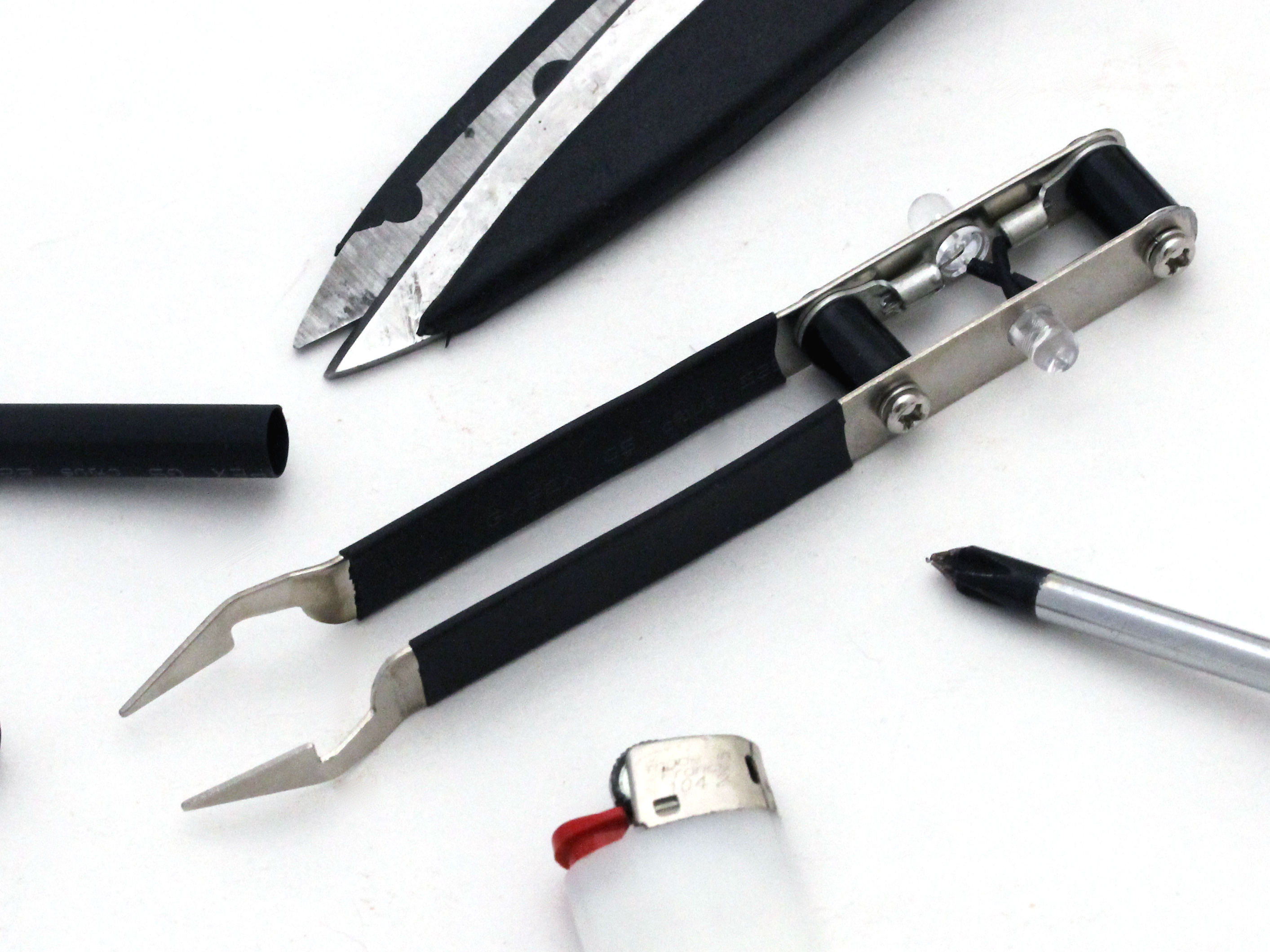I’ve always been interested in electronics, but when I started publishing projects professionally, I got interested in photography, too. I soon realized that with BEAM robots and other small “artisanal” circuits, the batteries are one of the largest and most visible components, and which brand you choose — the colors, the text, the design on the label — can make a big difference in how your pictures come out.
So I started hoarding batteries — even dead ones, if they were unusual- or interesting-looking. And now my collection is slightly out of control, which can be a real pain when I just need to swap fresh ones into the video game controllers. Watch batteries and other “coin cells” are particularly annoying because they’re so small and fidgety, and can be really awkward to pinch between voltmeter probes to test.
This tool gives me a better way. The jaws are insulated from each other, and all you have to do is squeeze. The polarity of the cell is indicated by which of the 2 LEDs lights up, and the charge state by its brightness.


